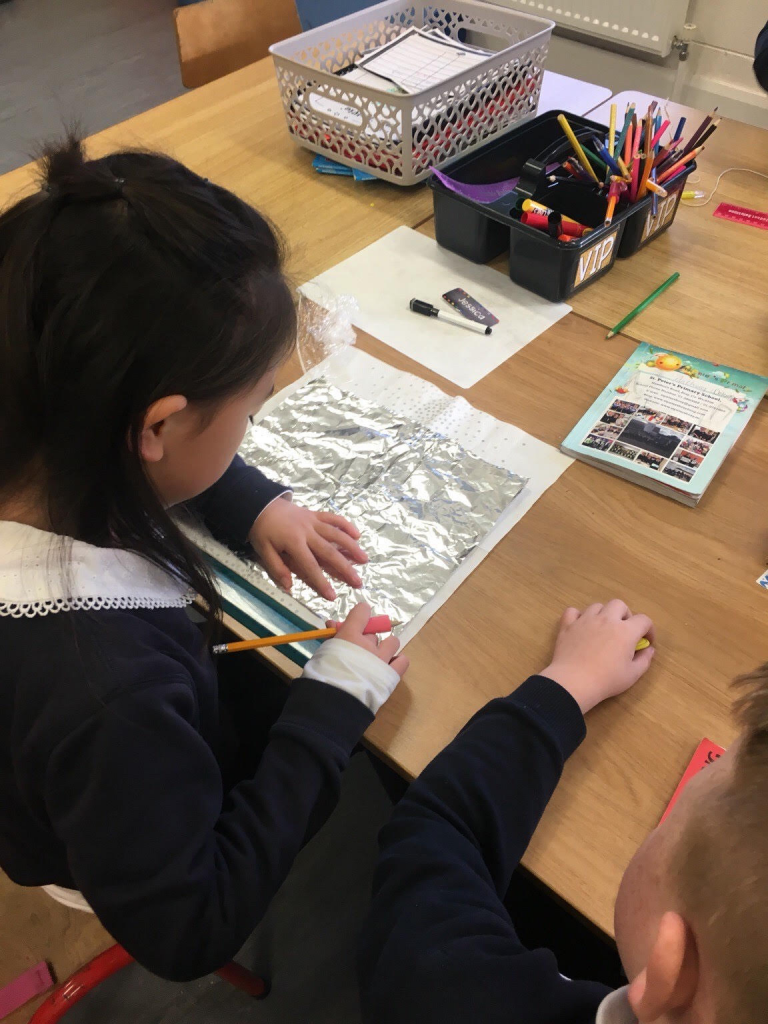Discover Primary Science
2nd Class Lesson
Brief Summary of our STEM Experiment:
- Stimulus/Rationale:
Recently, 2nd class wanted to investigate different methods of transport for Santa Claus. This was stimulated by a question I posed to the class, ‘If the reindeer went on strike on Christmas Eve how would Santa Claus travel to deliver presents to all the boys and girls?’ We brainstormed some alternatives coming up with rockets, flying cars, jet-pack’s, wings etc. however a quick and feasible alternative we agreed would be a parachute.
- Task:
Design and build a parachute for Santa Claus. The aim is to keep him and the sack of toys safe in their parachute when landing.
Breakdown of STEM in the lesson:
Step 1: Science
Strand: Materials
Strand Unit: Properties and characteristics of materials
Children were investigating the characteristics of materials and how they influence the force of movement of their designed parachute. They explored the durability, and transparency of the materials being used (tissue paper, cling film, tin-foil).
Investigating if;
- The materials were strong enough to hold Santa Claus in the egg-stand.
- They could withstand and catch air in them to slow down the force of movement when being dropped from a height to ensure Santa Claus landed safely.
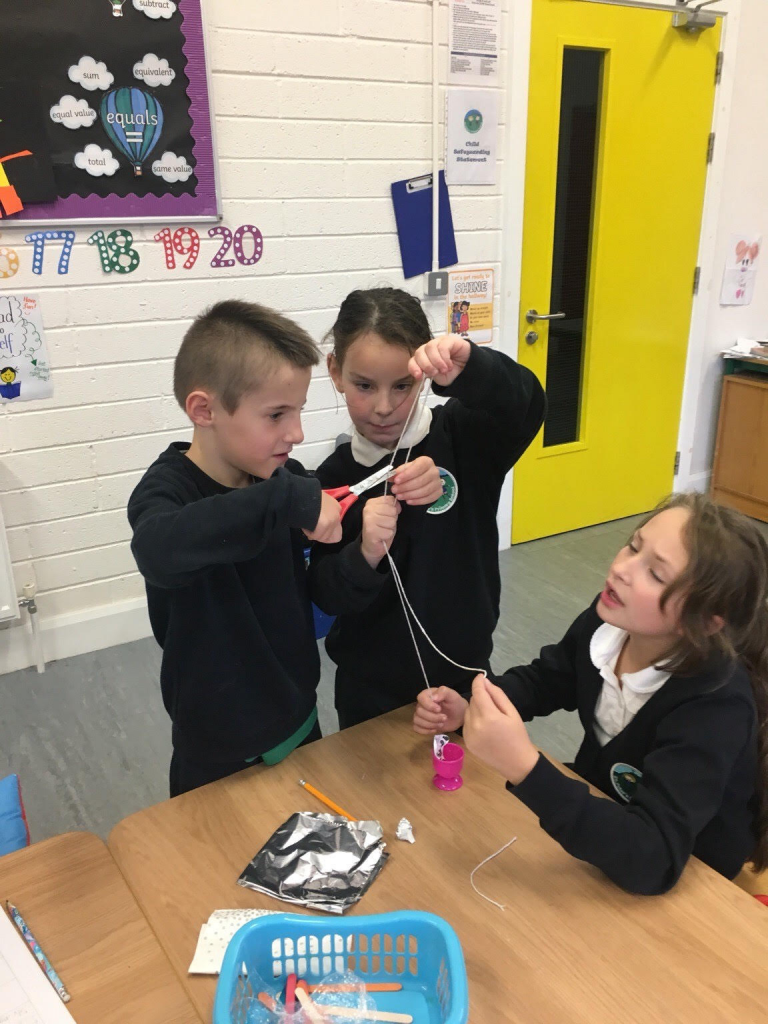
Step 2: Technology
- Children used an iPhone to video record the group of 4 children who were dropping their 4 parachutes at one time. This video was then put into slow-motion to observe what group/parachute had reached the ground slowly and safely to ensure Santa Claus had safely landed without any difficulty.
This was essential in the investigation process as children were enabled to see the way different designs and different materials impacted the parachute. They were enabled to observe and differentiate between the parachutes that were strong and safe and those that were not.
- They also used the stopwatch app on an iPhone to measure the time taken for the parachute to reach the ground from the height at which it was dropped.
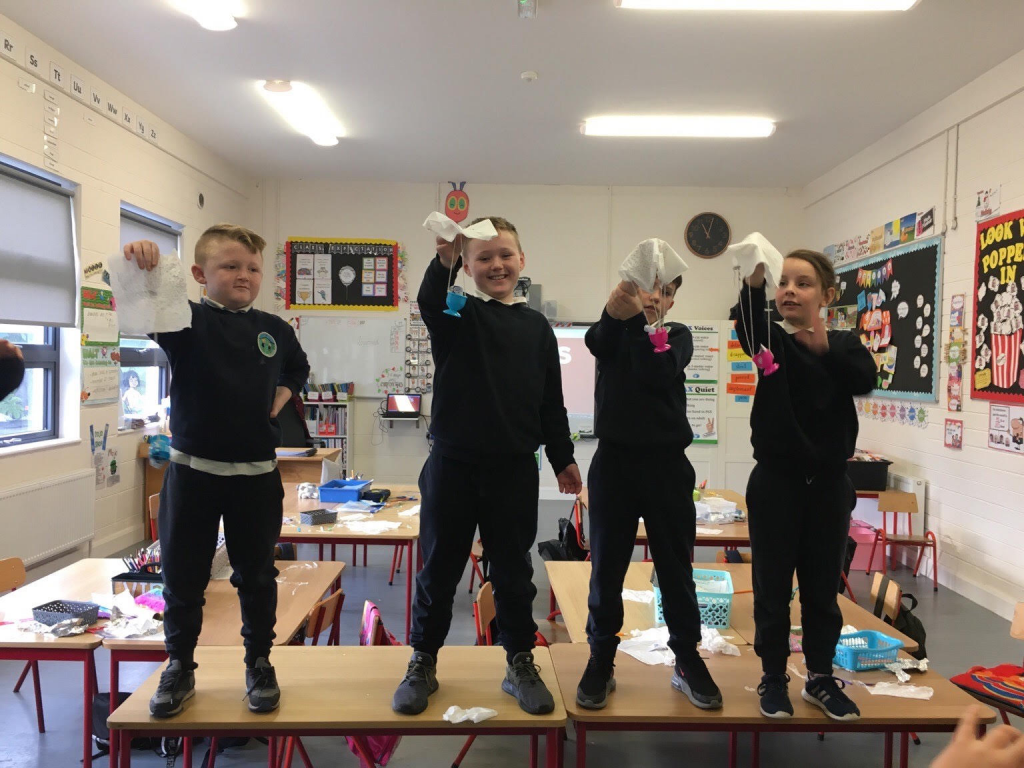
Step 3: Engineering
Children engaged in engineering through designing a plan to make a parachute and the actual construction of their parachutes.
Using materials provided the children were asked to ensure they were creating fair designs – that their parachute material was the same size for each material used (cutting the tin foil, tissue paper and cling film to the same size).
Children had to make sure that the length of each string being used was the same so that the egg-stand where Santa Claus was would not topple over. That they had created a sturdy structure for him to sit comfortably throughout the time he would be in the parachute.
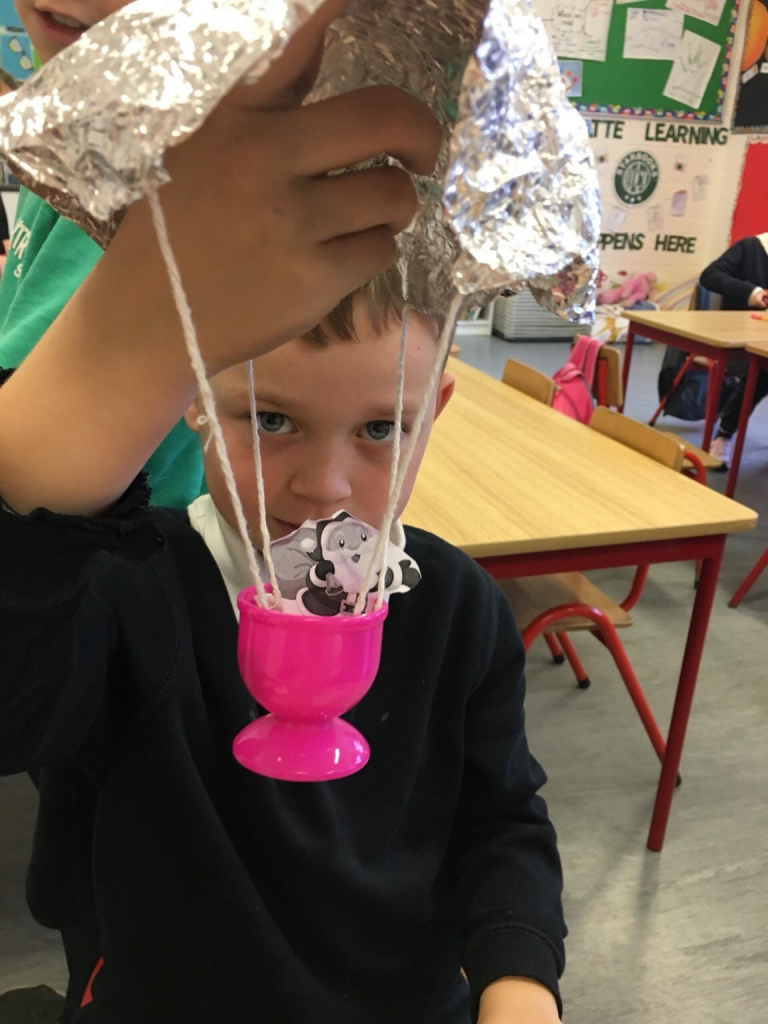
Step 4: Maths
Children were using their maths knowledge to implement skills needed to measure length and time.
- Children had to measure the length of strings used to connect the parachute to the egg stand. They needed to ensure the length of all 4 strings was the same length. They also used their skills in measurement to measure the length and width of the square/rectangular piece of material used as the parachute (tin-foil, tissue paper and cling film) to ensure they were all the same size and that the investigation was a fair test.
- Children used the stopwatch app on an iPhone to measure the length of time taken for the parachute to hit the ground from the height at which it was dropped. They needed to observe and identify what parachute was the safest by looking at the different times it took each parachute to fall.
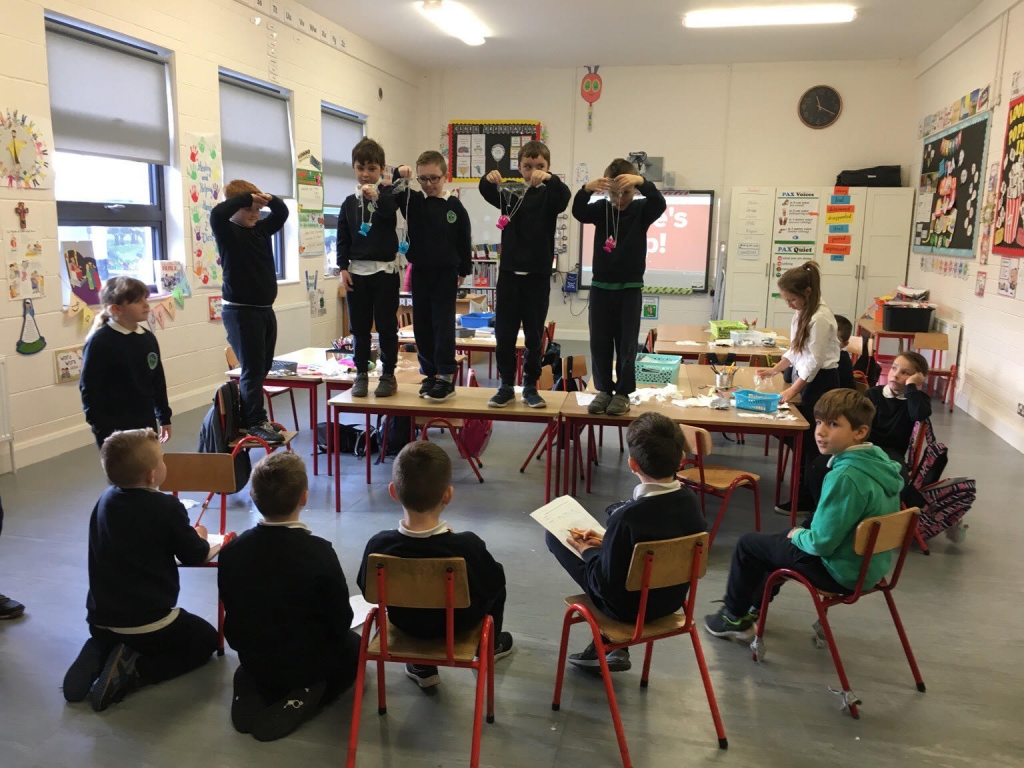
Step 5: Reporting:
POE Investigation Sheet
Children were required to fill out a POE – Predict, Observe, Explain sheet throughout the experiment noting their predictions, observations and explanations of how each material performed as a parachute.
Children had to discuss within their groups what parachute/material was the most appropriate material Santa could use to build his parachute. Their result was then presented to the class by the spokesperson in their group.
